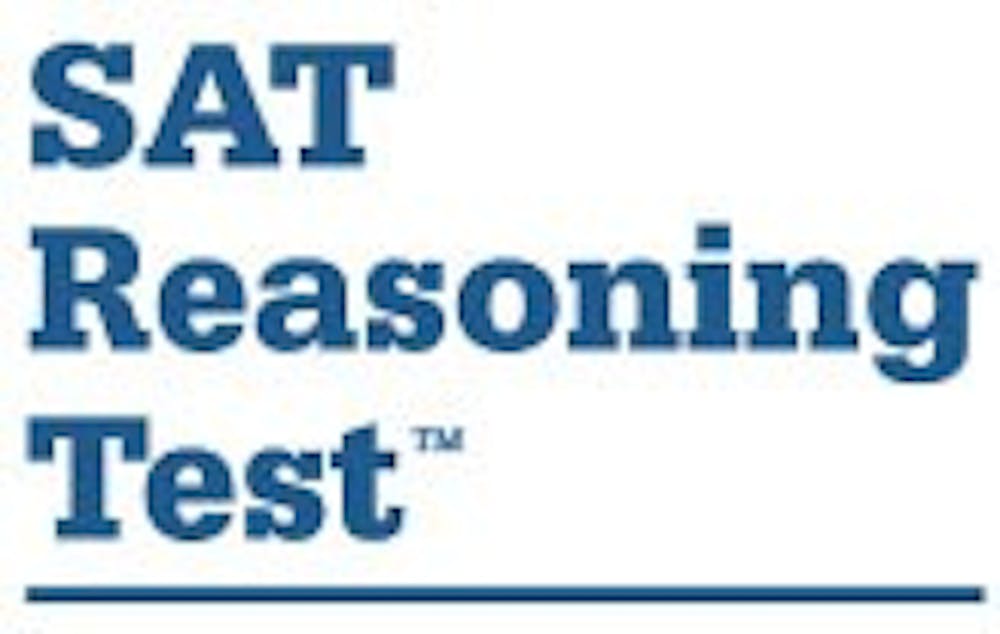The College Board announced plans to fundamentally restructure the SAT during the next two years in a press release mid-March. Though the changes are certain to affect how high school students study for the high stakes exam, admissions offices across the country have also been forced to weigh the potential impact.
“It is still too early to determine how the SAT changes will impact our admission policies or the application review,” Dean of Admissions Greg Roberts said. “I am encouraged that they are focusing so heavily on college access and equity, and I like that they are partnering with Khan Academy to open up test prep to all students. We will be eagerly waiting to hear more details about the proposed changes to the test in the coming months.”
According to the Office of Undergraduate Admissions website, standardized testing is often viewed as a useful but imprecise instrument, and setting an absolute minimum test score for admission would be asking these tests to do something they weren’t designed to do. Because of the highly-qualified applicant pool the University receives, however, most admitted students have scored well on the SAT.
Key changes to the test will include replacing rare vocabulary words, such as “depreciatory,” with ones more pertinent to material covered in college courses, such as “synthesis” or “empirical,” according to a New York Times article. Additionally, the essay portion of the exam — which has been required since 2005 — will become optional, and will now ask students to read and analyze a passage instead of posing an open-ended question.
Other changes include eliminating the guessing penalty and reverting to a 1600 point scale, which will be calculated by combining the verbal and math section scores, which each have an 800 point maximum. The essay will have a separate score.
The math sections will now focus primarily on linear equations, complex equations or functions and ratios, percentages, and proportional reasoning, with calculators being permitted only on designated sections.
The verbal section will consist of reading and writing portions, and will include source documents from a variety of fields, including science and social studies. Additionally, every exam will include a passage from the nation’s founding documents, like the Declaration of Independence, or an important text pertaining to one of these documents, like a speech from Martin Luther King, Jr.
College Board President David Coleman also announced programs to help low-income students navigate the often-pricey college application system, including fee waivers, allowing students to apply to four colleges at no charge and providing free online practice problems and instructional videos through a partnership with the Khan Academy.
“They are also simplifying the SAT, and I believe will provide it at low or no cost to low-income students,” Education Prof. David Breneman said in an email. “These changes may make the test somewhat less of a barrier to low-income students. The changes may also undercut some of the test-prep companies, which mainly helped high-income students.”
Many of the proposed changes will make the SAT more similar to the ACT, which for the last two years has outpaced the SAT in overall test-takers.
“My general sense is that SAT is responding in large part to increased competition from the ACT exam, which differs from the SAT in being more explicitly focused on testing educational achievement in high school courses than the SAT, which retains some of its earliest legacy as an aptitude test rather than an achievement test,” Breneman said.
Currently, the University accepts either SAT or ACT scores and strongly encourages first-year applicants to provide the results of two SAT subject tests. The Admissions Office also considers only the highest scores among those submitted by applicants, taking the best reading, math and writing scores in what is known as “super scoring.”
According to the “Notes from Peabody,” the admissions blog written by Jeannine Lalonde, senior assistant dean of admissions, unofficial statistics for 2013-14 admitted students show the middle 50 percent of SAT scores ranged from 1970 to 2240, while the middle 50 percent of ACT composite scores ranged from 30 to 34.







